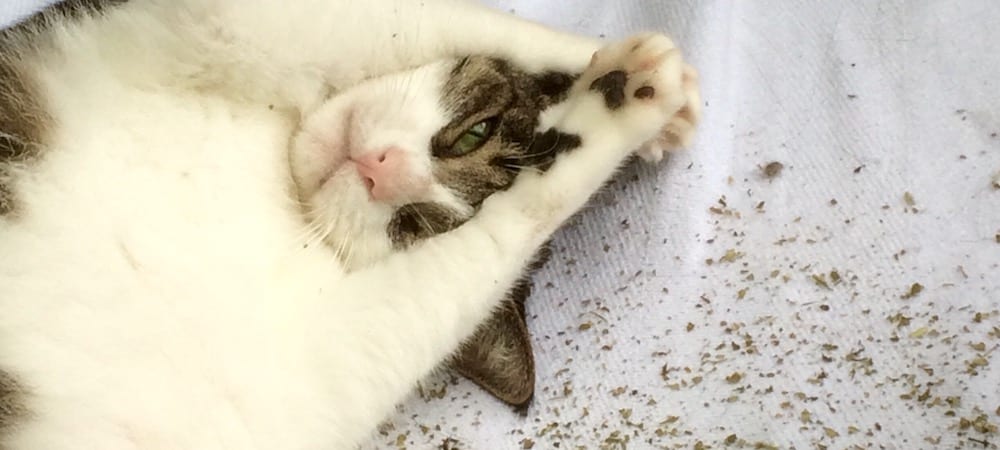Catnip 101

This article contains affiliate links. Found Animals receives a portion of the proceeds from every purchase made after clicking on the links. These profits go toward saving more homeless animals!
Catnip — also known as catwort, catmint and field balm — is a favorite of all types of cats. Yes, even the big ones, too! Lions love the stuff just as much as your everyday tabby. So what is it? Why does it make our feline friends high? Here’s catnip 101!
What Is Catnip?
Catnip is originally from Asia and Europe. It’s an herb with a strong minty and lemony fragrance. Its Latin name is Nepeta cataria, with cataria meaning “of a cat,” so needless to say the herb’s effects on kitties is well established. It’s non-addictive and safe for cats to eat.
The “High”
Not all cats have a sensitivity to catnip! In fact, only about 50% of cats “get high” when exposed to the herb. Whether your cat is one of the lucky blissed-out few who has a reaction is dependent on their genes. You’ll be able to determine your kitten’s sensitivity around the age of 3 or 6 months.
So what causes the high? It’s all in the oil, which is in the herb’s stems, seeds and leaves. There’s a chemical in the oil called nepetalactone. Usually just a whiff or two of the oil is all it takes to get a reaction from a cat.
The high varies from cat to cat. Some felines get super playful and frisky, while others mellow way out and are super calm. Generally this blissed-out state is fairly short. The average high only lasts about 10 minutes. After the 10 minutes have passed, it takes a period of about 2 hours before a cat can experience another high if exposed to the catnip again.
Training With Catnip
Cats have such a powerful reaction to the herb and it is safe to use multiple times, so this makes it an effective training tool. Use catnip to lure your cat away from undesirable places or make them warm up to where you want them to go. For instance, if you want your cat to stop scratching up your furniture, sprinkle some of the herb on a scratching post so they use the post instead. Trying to get your cat to explore their new kitty condo? Spread catnip around it.
You can also easily make your own catnip toys! These toys are a great way for your cat to stimulate their body and mind through play. Try sprinkling some herb in a paper bag and crushing the bag into a ball. You can also put a pinch of catnip in a sock and tie a knot at the top. Don’t feel like making your own toys? Get some catnip mouse toys or tea bags or try KitNipBox, a monthly subscription box for your cat!
We recommend using fresh or dried catnip as it tends to be stronger than catnip spray. Unfortunately, the spray generally doesn’t contain enough catnip oil to be effective on cats. We’re a fan of catnip pellets which are less messy than loose catnip sprinkled around your house. You can even grow your own with this self-watering catnip planter.


